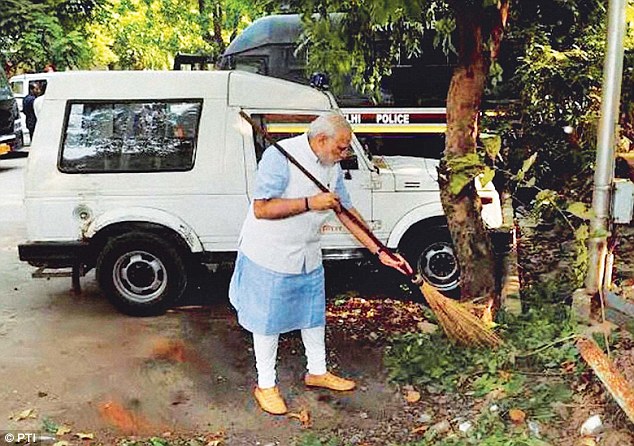Hobbled by depleted purses, the municipal corporations in North and East Delhi have not been able to make headway in providing people with toilets, a task entrusted to them by PM Narendra Modi under the Swachh Bharat thrust two years ago.
Even the few that the three municipal bodies, including the South Corporation, have erected are languishing for want of maintenance.
After the PM’s announcement in 2014, the three corporations have constructed 50 Namma model solar-based toilets as part of a corporate social responsibility project and 30 others in a joint effort with the Delhi Urban Art Commission. But these are inadequate and have left many public spaces without restroom facilities, especially for women.
In this dismal situation, it is the Delhi Urban Shelter Improvement Board (DUSIB) that is trying to set a benchmark, though only in inner city areas. DUSIB constructed 4,500 community toilets in 2014-15 and has a target of 10,000 more before April 2017. “Our jurisdiction is restricted to slum areas and the corporations are responsible for constructing toilets in the city,” says VK Jain, CEO, DUSIB.
DUSIB carried out a survey to pinpoint areas where defecation was a normal affair in April and identified 254 spots in 754 JJ clusters where open defecation was an issue. It has since taken up the task of ensuring Delhi is freed of open defecation by 2018. “To ensure that, we need to construct at least 13,000 more toilets,” Jain points out.
The capital’s precarious hygiene infrastructure only compounds the failure of the three municipalities to maintain toilets constructed at a cost of crores of rupees in the past several years. Incredibly, most of these do not have water connections, while many others are in decrepit condition, with the corporations showing no inclination to repair them.
The lackadaisical attitude is evident in the way over 600 waterless urinals were made ahead of the 2010 Commonwealth Games without proper research. The concept didn’t work in Delhi’s climatic condition, but no effort has been made to retrofit these with water connections. “We will be able to convert all these urinals soon,” promises Subhash Arya, leader of the house, South Corporation. He, however, adds, “We have requested the commissioner to hand over public toilets to RWAs and market associations for maintenance.”
Not surprisingly, toilets are fodder for BJP’s rivals. Farhad Suri, leader of the opposition in the South body, minces no words: “The concept of waterless urinals failed, cafe-cum-toilets were abandoned and not even a single project has been sanctioned under the Swachh Bharat Abhiyan. Eight cafe-cum-toilets were developed by the erstwhile corporation in 2010, but they have been locked for ages now.”
Bindeshwar Pathak, an expert and founder of Sulabh International, says the problem Delhi is facing is not the lack of toilets, but their maintenance. “Maintaining a toilet requires discipline, and civic agencies are not disciplined,” he argues. “Toilets are available but people do not want to use them because civic agencies do not ensure they are clean.”
In contrast,NDMC not only keeps its public toilets running properly, but has also started a project to promote public art that will deter people from urinating on walls. “We have developed smart toilets run on solar power with provisions for recycling of water,” explains a senior NDMC official.
This article was taken from here.

